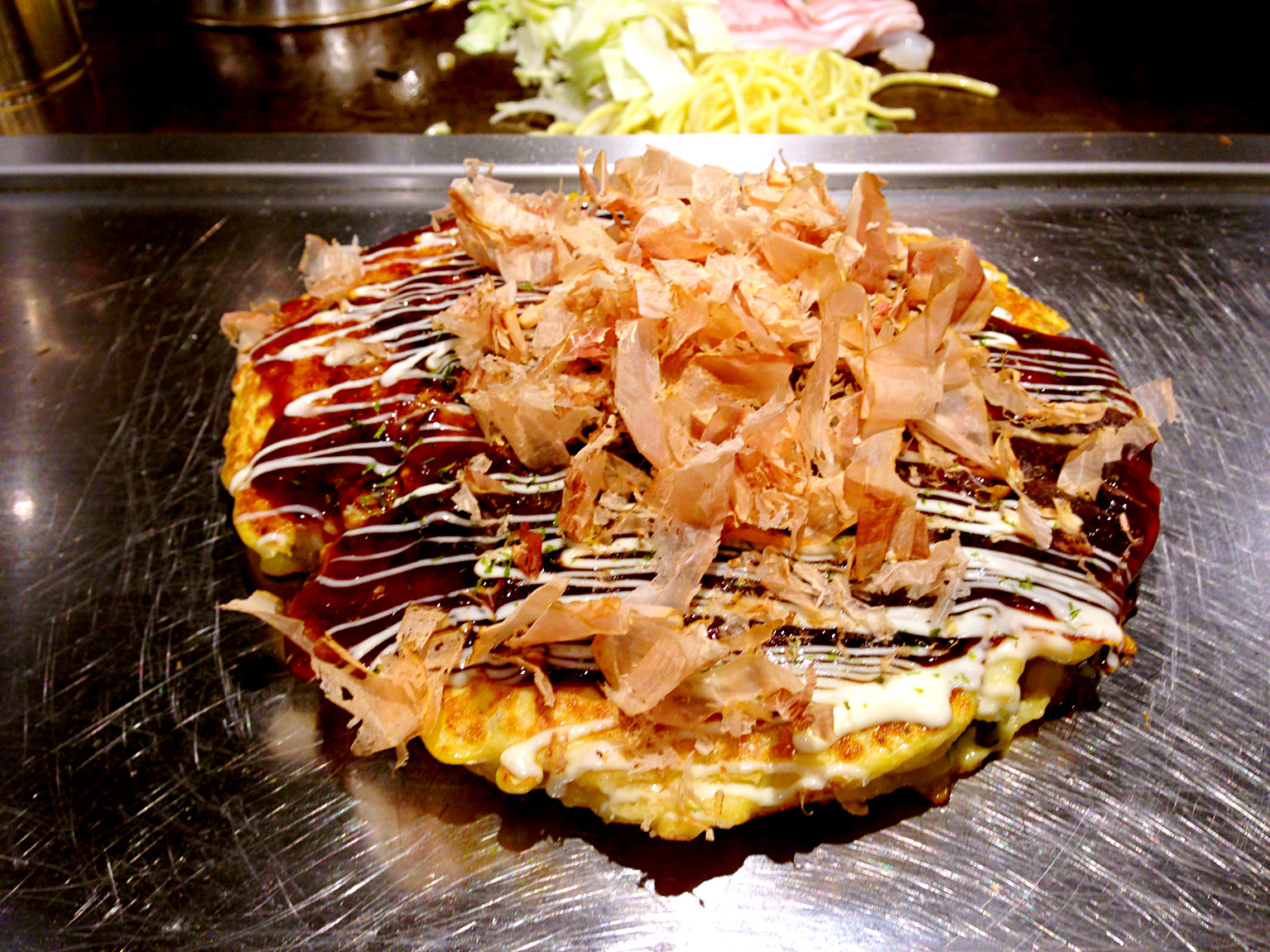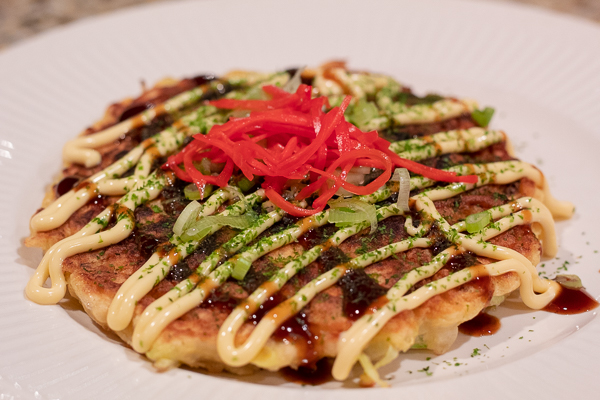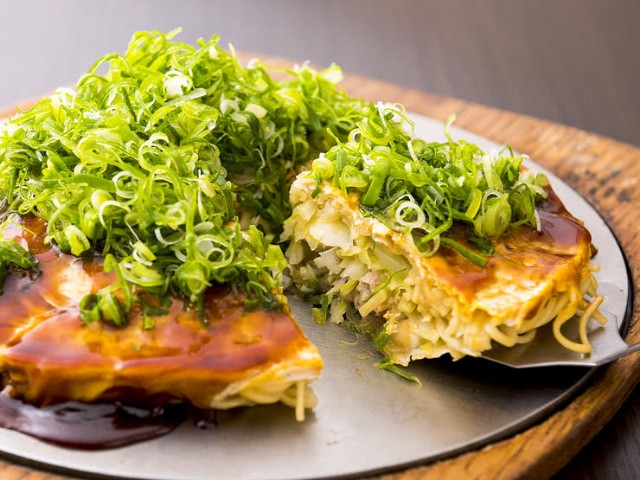Okonomiyaki: A Culinary Journey Through Japan’s "Soul Food"
Related Articles
- A Dive Into The Deliciousness: Exploring The World Of Tuna Poke (Hawaii)
- A Dive Into The Delicious Depth Of American Clam Chowder: From Classic To Creative
- Homemade Dim Sum: Crafting Dumplings, Bao, And Spring Rolls
- The All-American Cheeseburger: A Culinary Journey
- Pasta Primavera: A Celebration Of Spring On Your Plate
Introduction
Welcome to our in-depth look at Okonomiyaki: A Culinary Journey Through Japan’s "Soul Food"
Okonomiyaki: A Culinary Journey Through Japan’s "Soul Food"

Okonomiyaki, often referred to as "Japanese pizza," is a savory pancake that offers an irresistible blend of textures and flavors. This beloved street food is not just a culinary delight but a symbol of Japanese culture, reflecting the nation’s penchant for adaptability and creative expression.
This article embarks on a comprehensive exploration of okonomiyaki, delving into its history, ingredients, cooking techniques, and diverse variations. We’ll uncover the secrets behind its irresistible appeal, empowering you to craft your own delectable okonomiyaki at home.
A Culinary Tapestry: The History of Okonomiyaki
The origins of okonomiyaki can be traced back to the early 20th century, with its roots firmly planted in Osaka, Japan. The name itself, a combination of "okonomi" (meaning "as you like") and "yaki" (meaning "grilled"), perfectly encapsulates the dish’s adaptable nature.
Early versions of okonomiyaki were simple, consisting of wheat flour, water, and cabbage, cooked on a hot griddle and topped with a simple sauce. This humble dish quickly gained popularity, evolving into a culinary canvas for creative experimentation.
During the postwar period, the availability of ingredients like mayonnaise and Worcestershire sauce led to the emergence of modern okonomiyaki. These additions, along with a wider variety of toppings, transformed the dish into the vibrant and flavorful street food we know and love today.
The Foundation of Flavor: Essential Okonomiyaki Ingredients
Okonomiyaki is a dish that embraces versatility, allowing for countless variations and personal touches. However, there are core ingredients that form the foundation of this culinary masterpiece:
1. Batter:
- Wheat flour: The primary ingredient in the batter, providing structure and a slightly chewy texture.
- Water: Used to create a smooth and consistent batter.
- Eggs: Add richness and bind the batter together.
- Dashi: A savory Japanese broth that enhances the flavor of the batter.
- Cabbage: The key ingredient for texture and a refreshing sweetness.
- Tenkasu: Crispy tempura scraps, adding a delightful crunch to the dish.

2. Toppings:
- Meat: Thinly sliced pork belly is a popular choice, adding richness and umami.
- Seafood: Shrimp, squid, and octopus are common additions, providing a briny flavor.
- Vegetables: Onions, green onions, and bean sprouts add a welcome crunch and freshness.
- Okonomiyaki Sauce: A sweet and savory sauce, often made with Worcestershire sauce, soy sauce, and sugar.
- Mayonnaise: Adds a creamy and tangy element, enhancing the overall flavor.
- Aonori: Dried seaweed flakes, providing a salty and umami taste.
- Katsuobushi: Bonito flakes, adding a savory and smoky flavor.

Mastering the Art of Okonomiyaki: A Step-by-Step Guide
Crafting the perfect okonomiyaki requires a balance of technique and creativity. Here’s a detailed guide to ensure success in your culinary adventure:
1. Preparing the Batter:
- In a large bowl, whisk together the wheat flour, water, eggs, and dashi until smooth.
- Add the chopped cabbage and tenkasu, gently mixing to combine.
- Let the batter rest for 10-15 minutes to allow the cabbage to soften slightly.
2. Griddling the Okonomiyaki:
- Heat a griddle or flat-bottomed pan over medium heat.
- Pour a generous amount of batter onto the hot griddle, spreading it out to form a pancake shape.
- Add your desired toppings to the batter, such as sliced pork belly, shrimp, onions, or green onions.
- Cover the pan and cook for 5-7 minutes, or until the underside is golden brown and crispy.
- Flip the okonomiyaki over and cook for another 3-5 minutes, until the other side is golden brown.
3. Finishing Touches:
- Drizzle the cooked okonomiyaki with okonomiyaki sauce, mayonnaise, and aonori.
- Sprinkle with katsuobushi flakes, allowing the heat of the okonomiyaki to make them dance and create a mesmerizing visual effect.
- Serve immediately, while the okonomiyaki is still hot and crispy.
Beyond the Basics: Exploring the World of Okonomiyaki Variations
The beauty of okonomiyaki lies in its adaptability. From regional variations to personal preferences, the possibilities for customization are endless. Here’s a glimpse into the diverse world of okonomiyaki:
1. Regional Delights:
- Osaka-style: The classic okonomiyaki, characterized by a thin and crispy pancake, typically filled with cabbage, pork belly, and tenkasu.
- Hiroshima-style: This variation features a thicker pancake, often filled with noodles, cabbage, and seafood.
- Modern Okonomiyaki: These innovative creations feature unique ingredients like cheese, kimchi, or even curry powder, reflecting contemporary culinary trends.
2. Vegetarian and Vegan Okonomiyaki:
- Vegetarian Okonomiyaki: Replace meat with tofu, mushrooms, or vegetables.
- Vegan Okonomiyaki: Use plant-based alternatives for eggs, mayonnaise, and sauces.
3. Creative Combinations:
- Seafood Okonomiyaki: Embrace the bounty of the sea with shrimp, squid, or octopus.
- Spicy Okonomiyaki: Add a kick of heat with chili flakes or sriracha sauce.
- Cheese Okonomiyaki: Melt mozzarella or cheddar cheese into the batter for a gooey and flavorful experience.
- Kimchi Okonomiyaki: Incorporate fermented kimchi for a tangy and spicy twist.
Culinary Tips for Perfect Okonomiyaki
- Batter Consistency: The batter should be thick enough to hold its shape but thin enough to spread easily.
- Cooking Temperature: Ensure the griddle or pan is hot enough to create a crispy crust.
- Toppings: Don’t be afraid to experiment with different toppings to create your own signature okonomiyaki.
- Presentation: Serve your okonomiyaki on a plate with a side of pickled ginger or Japanese radish.
- Enjoy the Experience: Okonomiyaki is best enjoyed with friends and family, sharing laughter and stories while savoring the delicious flavors.
Conclusion: A Culinary Journey Continues
Okonomiyaki is more than just a dish; it’s a culinary journey through the heart of Japanese culture. It’s a testament to the nation’s love for creativity, adaptability, and the joy of sharing food with loved ones. With each bite, you’ll experience the vibrant flavors and textures that have made okonomiyaki a beloved staple for generations.
This article has provided a comprehensive guide to the world of okonomiyaki, from its history and essential ingredients to cooking techniques and variations. Now, it’s your turn to embark on your own culinary adventure, experimenting with different flavors and toppings to create your own unique masterpiece. The possibilities are endless, and the only limit is your imagination. So, grab your ingredients, fire up your griddle, and let the journey begin!
Closure
We hope this article has helped you understand everything about Okonomiyaki: A Culinary Journey Through Japan’s "Soul Food". Stay tuned for more updates!
Don’t forget to check back for the latest news and updates on Okonomiyaki: A Culinary Journey Through Japan’s "Soul Food"!
Feel free to share your experience with Okonomiyaki: A Culinary Journey Through Japan’s "Soul Food" in the comment section.
Keep visiting our website for the latest trends and reviews.






